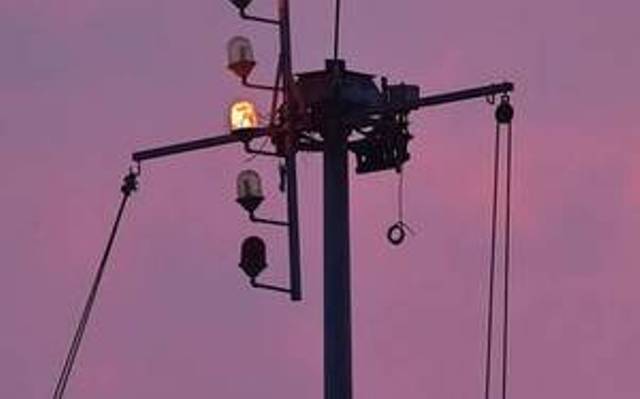Cyclone Yaas: Odisha Ports Put Up Warning Signals; Here’s All You Need To Know

Bhubaneswar: A day ahead of the expected landfall of Cyclone Yaas along the Odisha coast on Wednesday morning, sea ports in the state on Tuesday hoisted different warning signals based on the storm’s local intensity and velocity.
Paradip port in Jagatsinghpur district and Dhamra port in Bhadrak have put up the second highest signal no. 10, followed by signal no. 8 at Astarang in Puri district and no, 3 at Gopalpur in Ganjam.
Notably, sea ports hoist different warning signals to alert ships against possible cyclones as well as the weather condition of the destination port.
Odisha Bytes brings all the details that you need to know about the warning signals.
When was cyclone warning signal was introduced?
The erstwhile British government had introduced the first warning signal at Kolkata port in 1865 after two consecutive storms hit the eastern city and Machilipatnam in 1864.
Types of warning signals
The sea ports use 11 signal systems on the basis of the formation and location of the low pressure and the cyclonic storm, its intensity, dimension, wind speed and direction of movement.
The information is provided by the India Meteorological Department (IMD) usually four times a day and once every three hours in case of a cyclone.
Signal 1
The ports hoist this signal when a low-pressure area is formed and the surface wind is about 60 kmph. This signal means that the port is not affected but it warns of slightly higher wind speed.
Signal 2
Hoisting this signal states about the formation of a Depression with surface wind speed up to 60-90 kmph. This signal is a warning for the ships leaving the port.
Signal 3
This signal is a warning that the Depression with a wind speed of 40-50 kmph could affect the port.
Signal 4
It indicates the formation of a Deep Depression with a wind speed of 50-60 kmph and a possible danger to the ships stationed at the port.
Signal 5
This signal states that the Deep Depression has intensified into a cyclonic storm and is likely to cross the coast keeping port to its left with a wind speed of 60-80 kmph.
Signal 6
This signal is similar to signal 5 but the cyclonic storm is likely to cross the coast keeping port to its right.
Signal 7
It indicates that the cyclone is likely to cross the coast over or near the port.
Signal 8
It indicates a very danger warning as the cyclonic storm becomes severe or very severe and is expected to move keeping the port to its left with a wind speed of 90-120 kmph.
Signal 9
This is also a very dangerous warning as the cyclone becomes severe or very severe and is expected to move keeping the port to its right.
Signal 10
This signal indicates that the cyclone is very severe and is expected to cross over or near the port with a wind speed of 120-220 kmph or as a super cyclone with a wind speed of 220 kmph and more.
Signal 11
Hoisting this signal means that all communications have failed with the cyclone warning office.

Comments are closed.